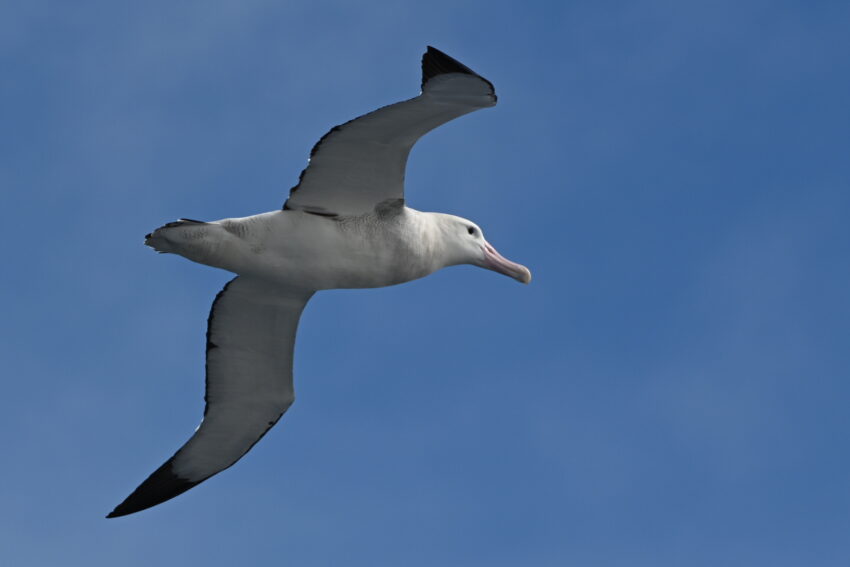(Today’s Chronicle can be found here.)
Up around 8:30 am this morning so that I can get an early start staring at Windy – erm, breakfast.
(Conditions do look slightly better this morning, but we’re still on tenterhooks wondering if we’re going to get the chance to make landfall.)
Usual drill – La Terrazza and then our usual round of homework and “walkies” around the outside track.
Tristan albatross in abundance today:
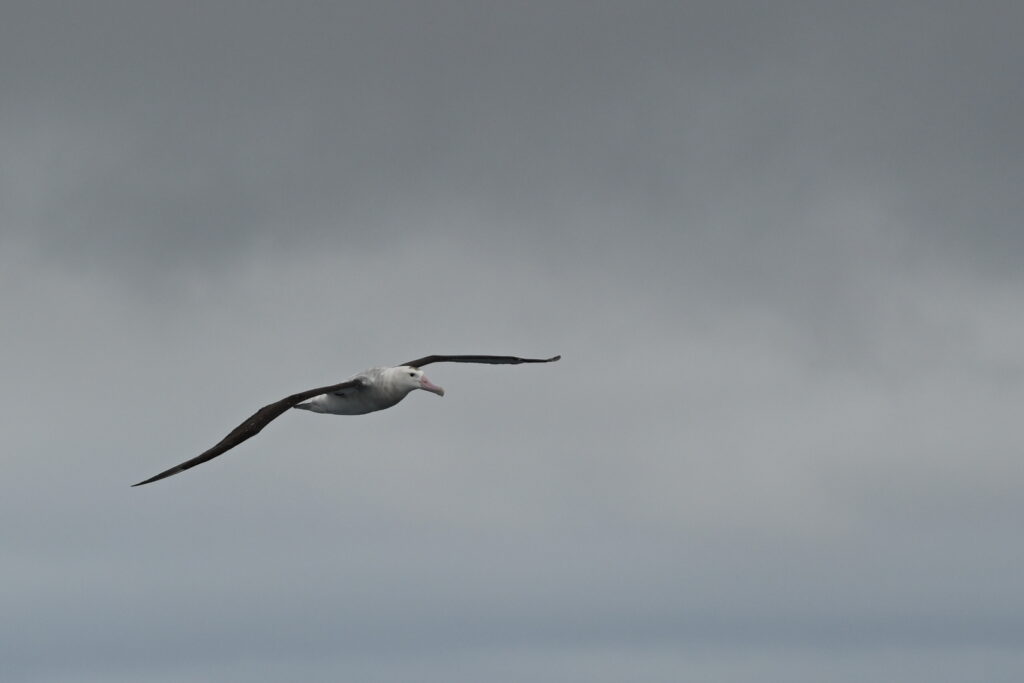
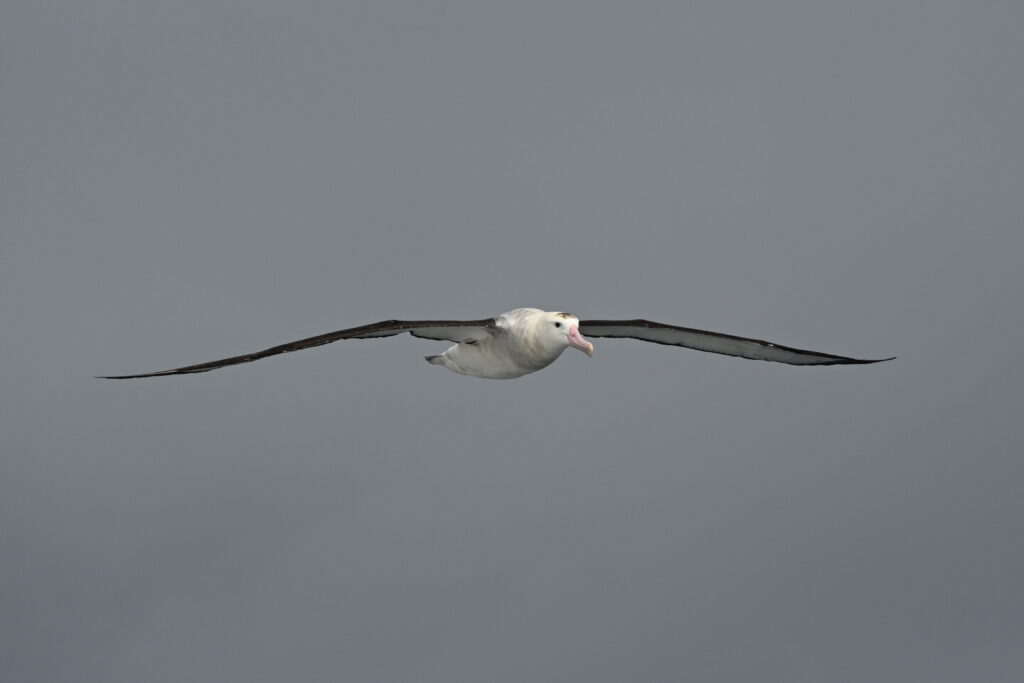
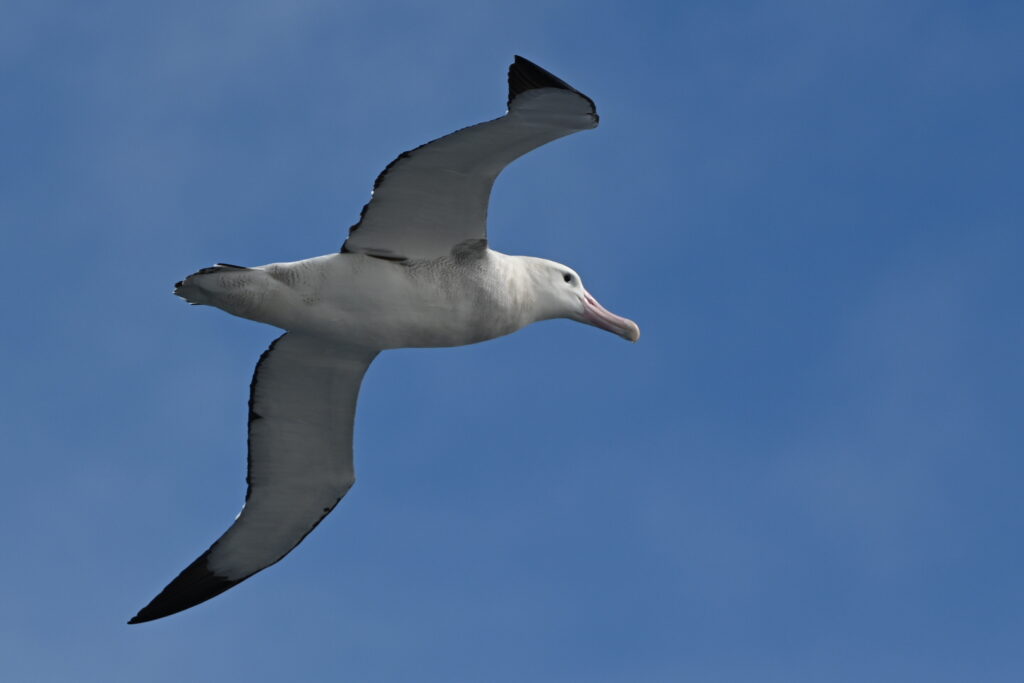
Between a 200 mm zoom and the many megapixels of my Nikon Z7ii it often looks like I’m much closer to the wildlife than I am in reality, so here’s the albatross at maximal zoom to show just how close they came:
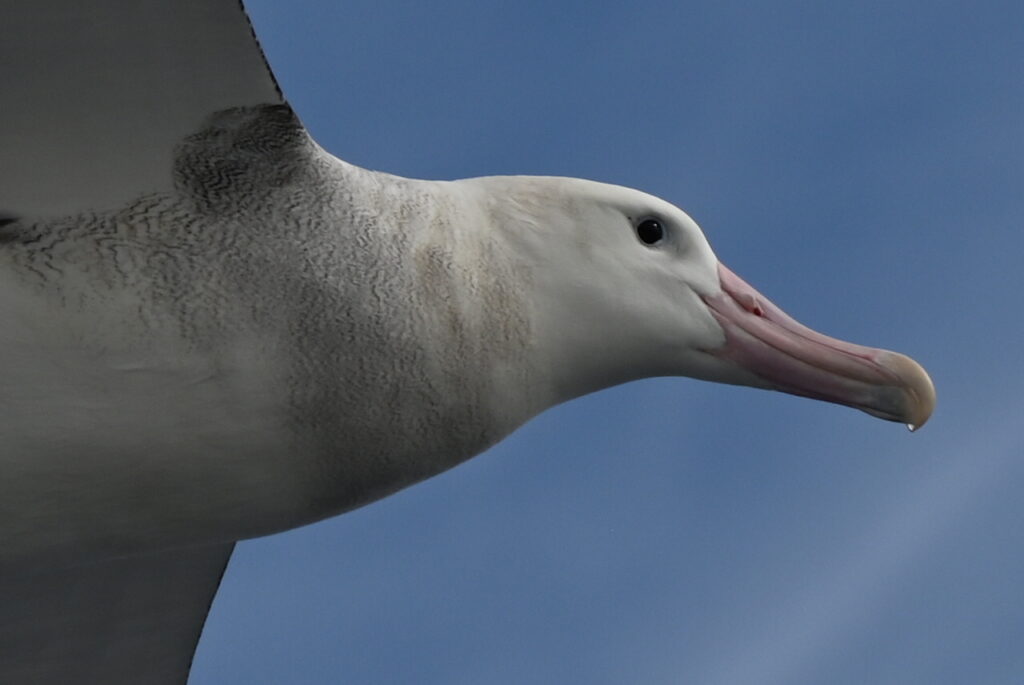
There were moments when they seemed close enough to touch.
Off for biosecurity. This time I remember to go clean our boots in advance, though the door to the mudroom is closed so I go back up to check with the Expedition Staff. They suggest it’s easier to ask forgiveness than permission, so back down I go to carry on with boot cleaning.
No issues from staff regarding our early arrival – and I’m even able to find a spare bobby pin with which to clean the hard-to-reach parts of our boots. Our boots are given the all clear from the expedition staff by the time our zodiac group is called, and we manage to avoid the bottleneck in the mudroom. I also make a mental note to pack bobby pins – or tweezers – next time around, so I’m not reliant on the guides.
We’re also getting haircuts this morning – it’s been more than 7 weeks since my son and I had a trim, so we’re both long overdue. The stylist does an excellent job, especially considering the swells – mild though they are. Each haircut cost US$50 which isn’t cheap, but not nearly as expensive as I’d feared – and well worth the convenience.
I pop down to La Terrazza for a quick lunch – we’ve generally avoided the buffet, but there’s some tasty options on offer:
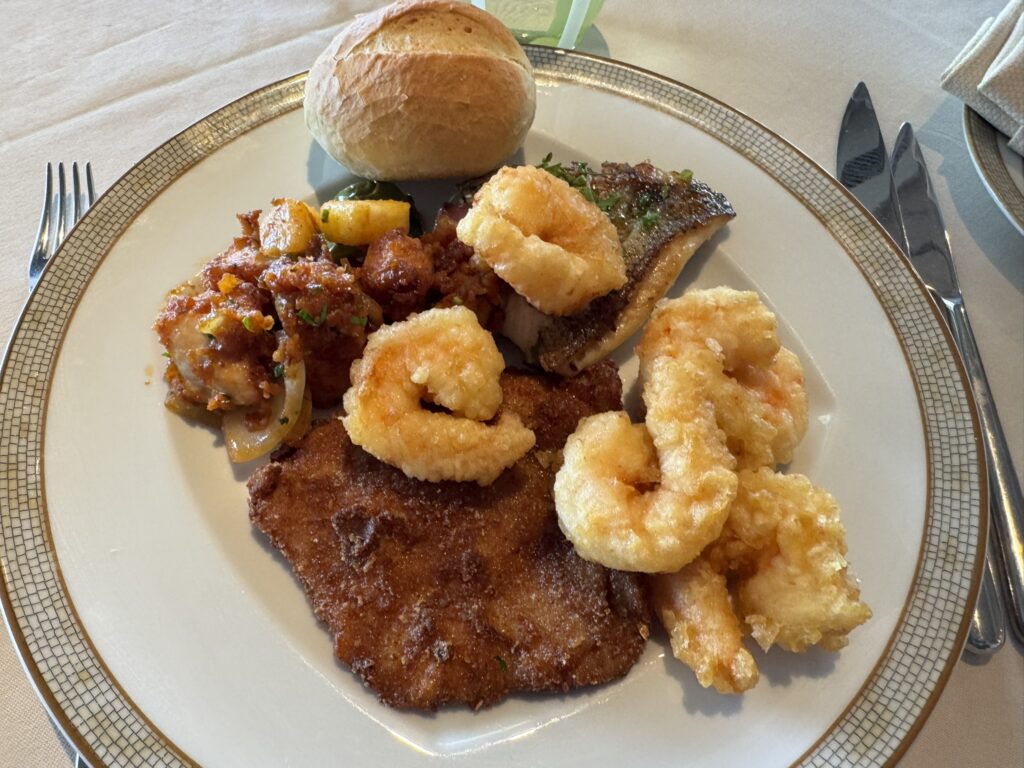
Pork schnitzel, crispy shrimp, sweet and sour chicken and fried snapper
A bit more time for writing and homework, and then we’re off to the Mid Atlantic Ridge party.
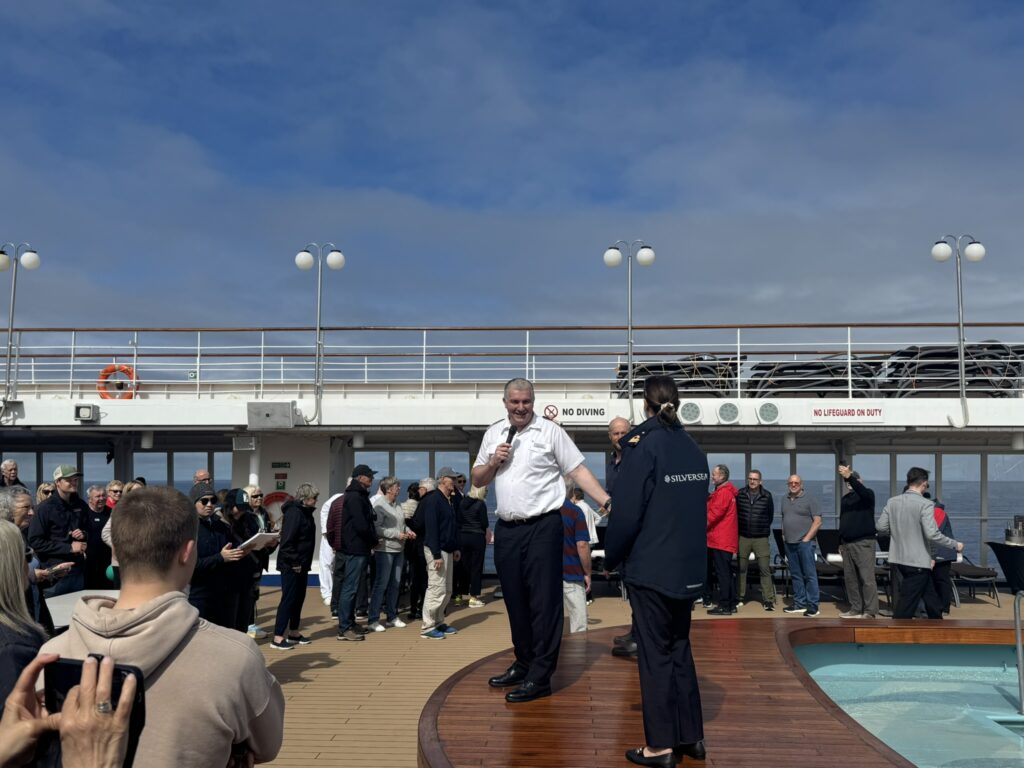
The Mid Atlantic ridge is an underwater mountain range along the floor of the Atlantic ocean that separates the North American tectonic plate from the Eurasian and African plates. It extends all the way from Greenland through the South Atlantic.
Each of the departments put together different challenges for guests to complete. The expedition staff had you toss a piece of paper between your legs and try to get it in the hole.
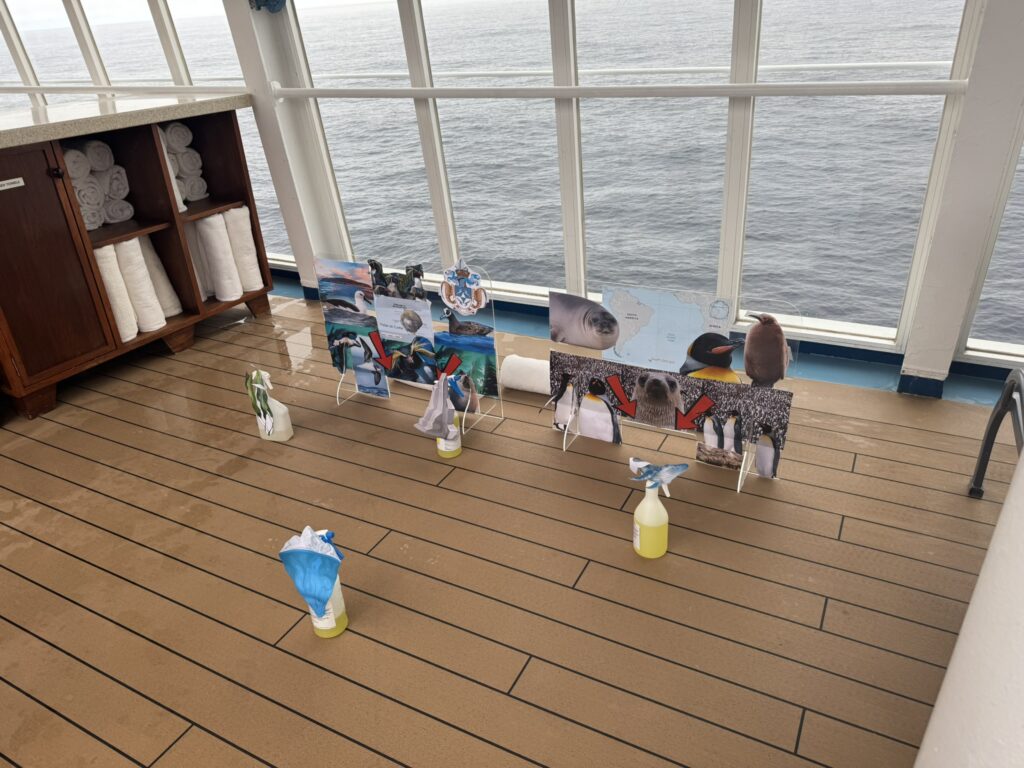
The boutique team had a beanbag toss:
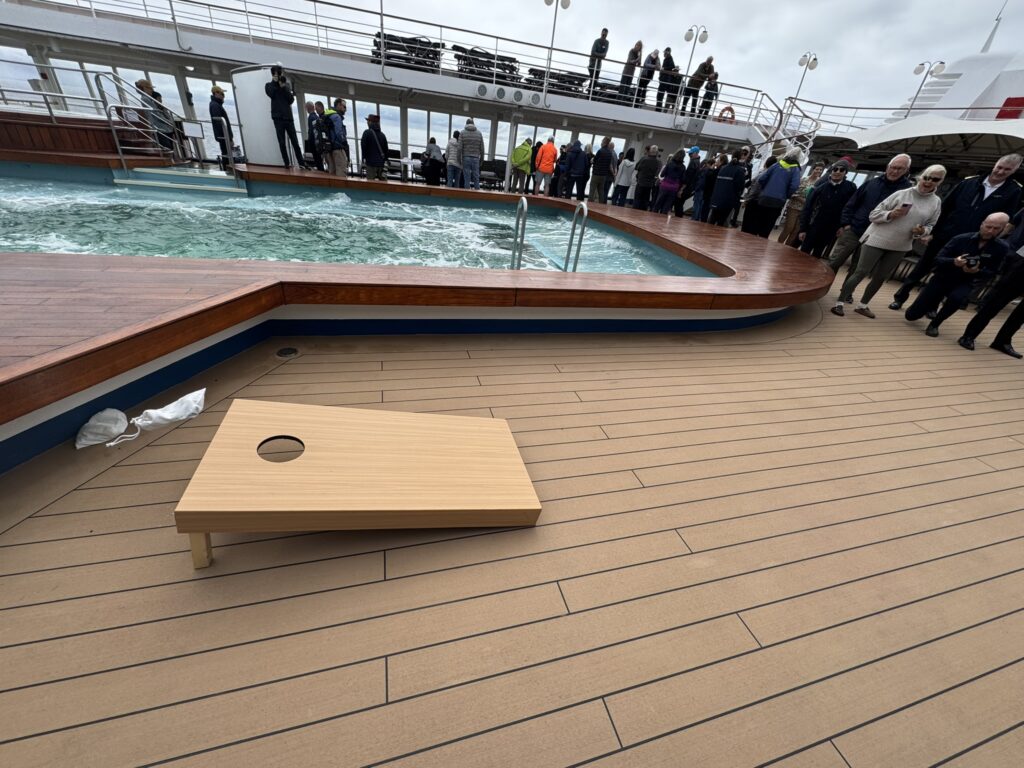
The bar team had beer pong:
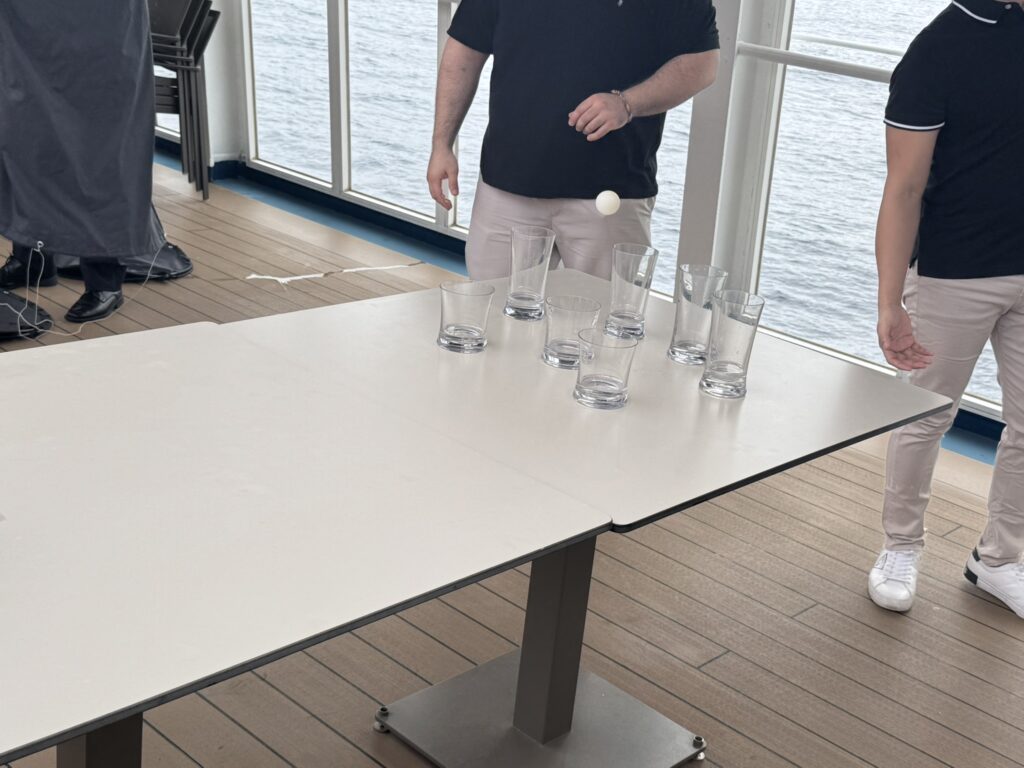
Our daughter was astonishingly good at this
The reception team did a hands-free balloon blowing challenge:
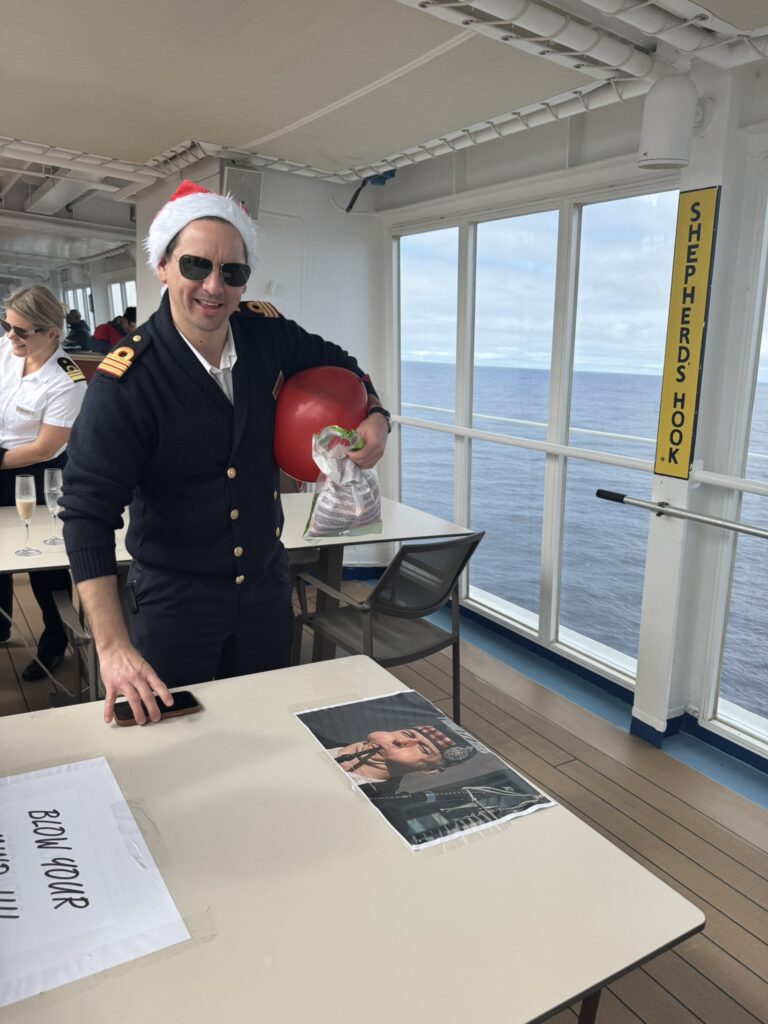
The bridge team asked which shapes correspond to which maritime distress situations:
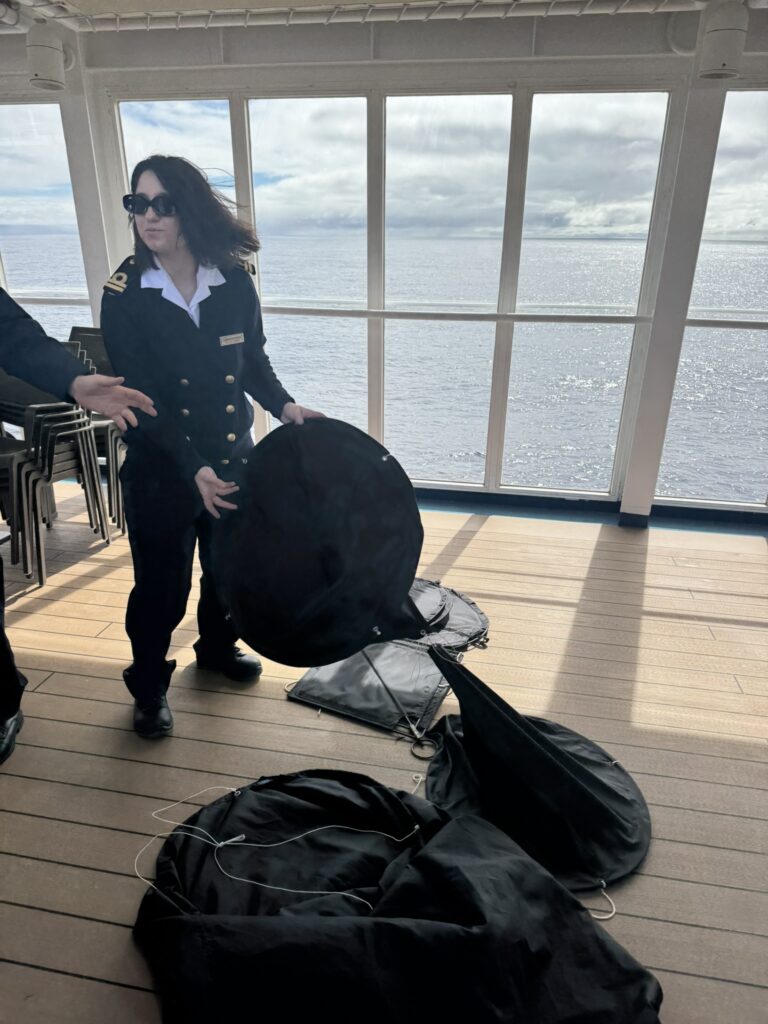
And engineering had a fiendishly difficult test in which you had to thread the wire without touching the sides:

Chief engineer Antotello was able to do it – but he might have been the only one!
There was also some sort of shaving challege run by the spa (not pictured).
Initially guests had to complete all the challenges to earn the certificate, but Chloë soon changed this to “must attempt”. Good thing too, or some of us might still be there!
And the certificates themselves are quite nice:
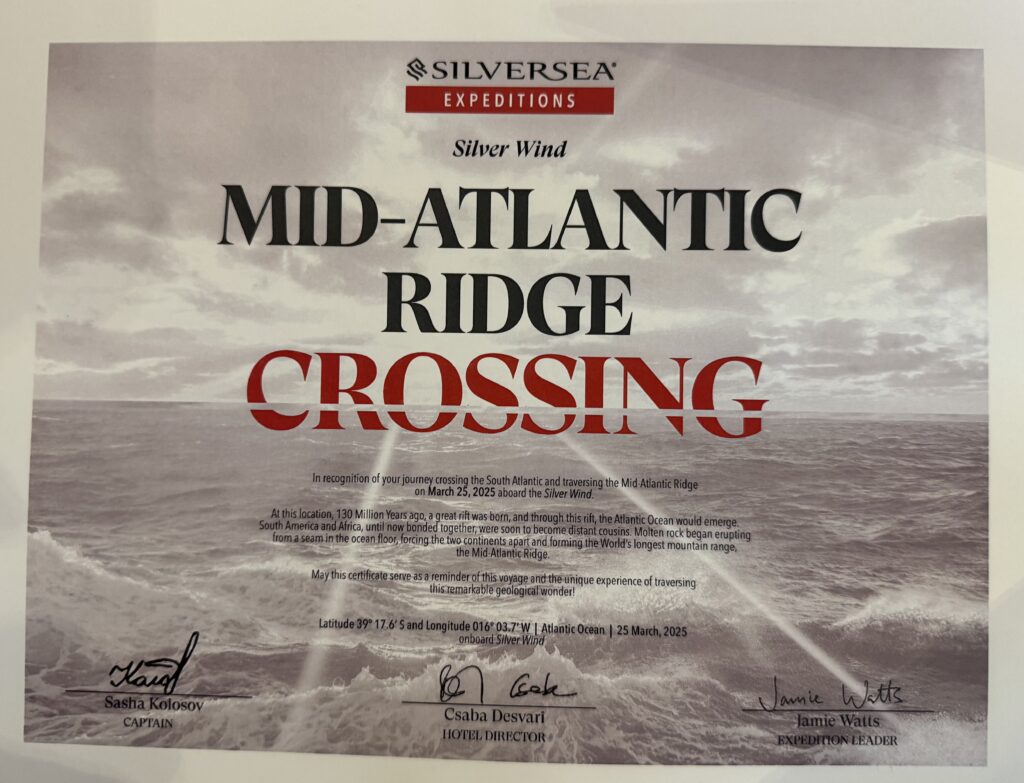
It was a great party. You know how I could tell? A conga line broke out:
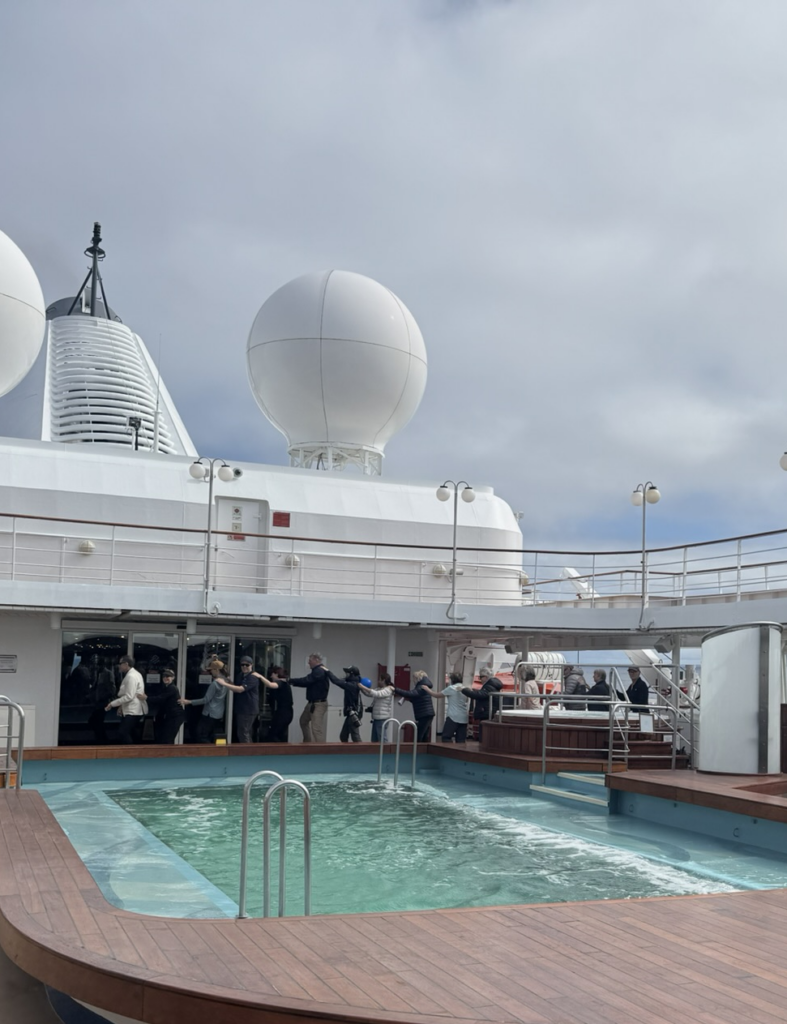
But soon it’s time for my wife and daughter to head to their art class, where they learn how to do abstract watercolours, salt paintings, and splatter techniques. (Art photo to come!)
My son and I play a bit of ping pong, and then move on to trivia where we placed second – our trivia partners critically know the number opposite 1 on a dartboard (19) and the birth month of Washington and Lincoln (February), while our son knows the god of medicine, poetry, archery, music and the sun (Apollo) and the periodic symbol for potassium (K).
Off to Alex’s presentation on life on Tristan da Cunha:
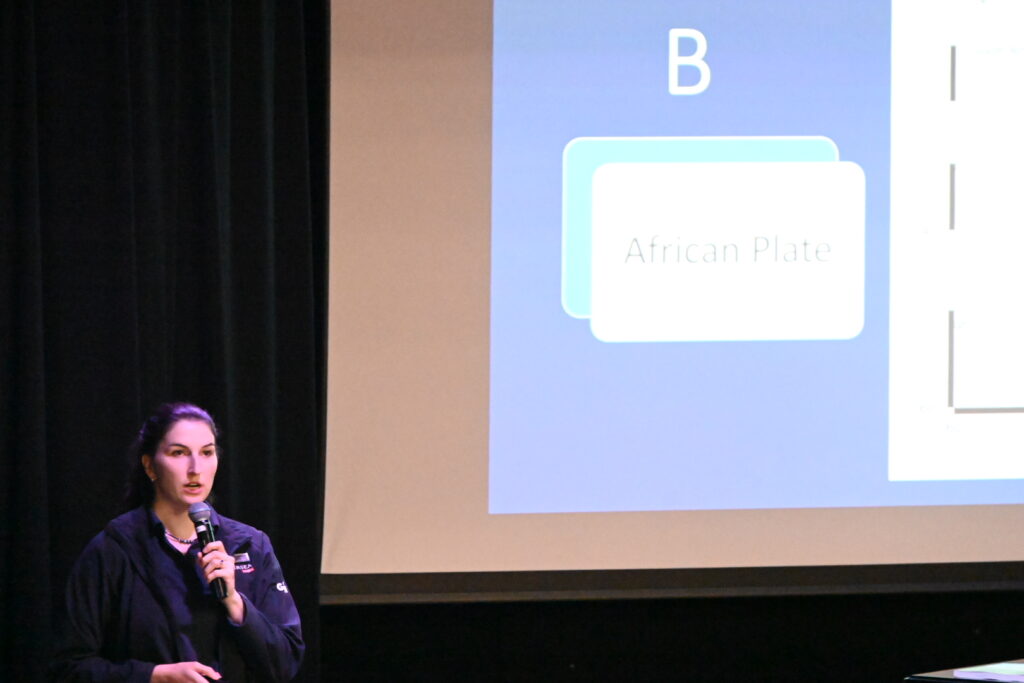
We’re fascinated to hear that Tristan was discovered in 1506 by Tristão da Cunha. Early in its history it was known as Reception Island, and marketed as a place for refreshments. It wasn’t permanently settled until 1817.
Tristan has never has a substantial population, and has long experienced the difficulties associated with being so remote. At one point early in the 20th century it went 10 years without a supply ship. However, they were able to remain self sufficient by gathering eggs, hunting, and salvaging from shipwrecks.
The volcanic eruption in 1961 posed another difficulty for the population – all were evacuated to the UK, but 95% voted to return, even after it was discovered that the local canning factory was buried under a small mountain of lava and that many of their possessions had been looted.
There are several Tristan-only holidays, including Old Year’s Night where the kids dress up like “okalolies” (in costume, similar to Halloween) and Ratting Day where the Tristanians work together to eradicate as many rats as they can. There’s a dance party at the end!
There are roughly 30 children on Tristan da Cunha at present, and the kids are hoping to meet some of them during our visit tomorrow if possible.
Recaps and briefings come soon after:

Despite his cheery countenance, Captain Sasha has unfortunate news – there is a significant weather system behind us, and so we will need to move on from the Tristan group immediately after our attempted landing tomorrow lest we be engulphed in the 10 metre swells currently northeast of South Georgia.
Jamie then takes the stage:
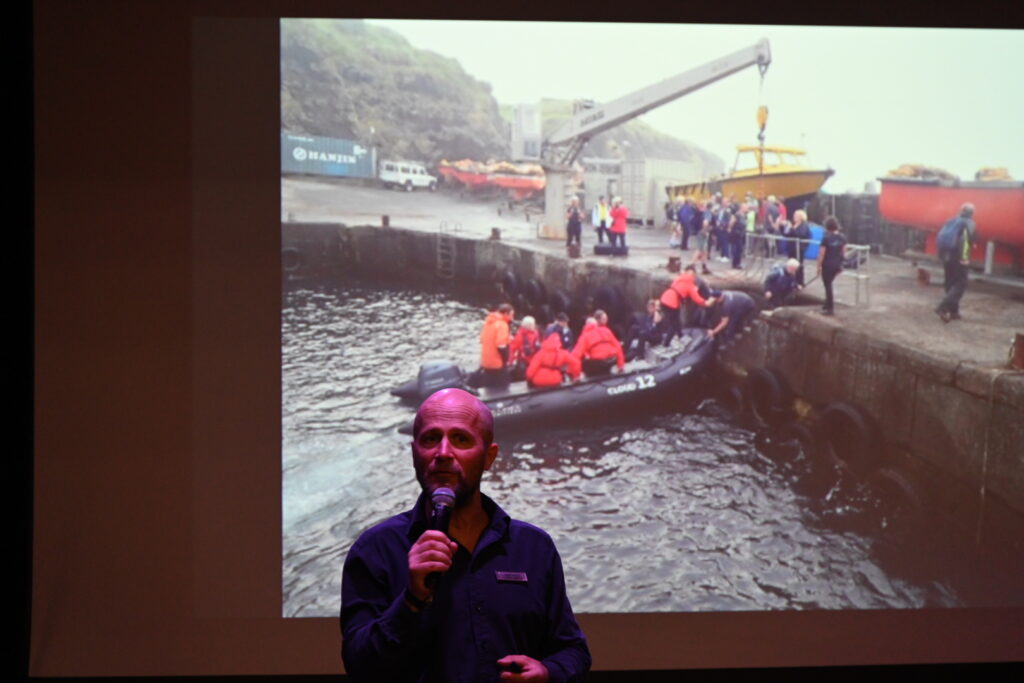
We are going to attempt a brief 30 minute landing at Tristan tomorrow, but no guarantees – this will entirely depend on the conditions we encounter tomorrow.
Sam then provides an overview of how the mid-Atlantic ridge was created:
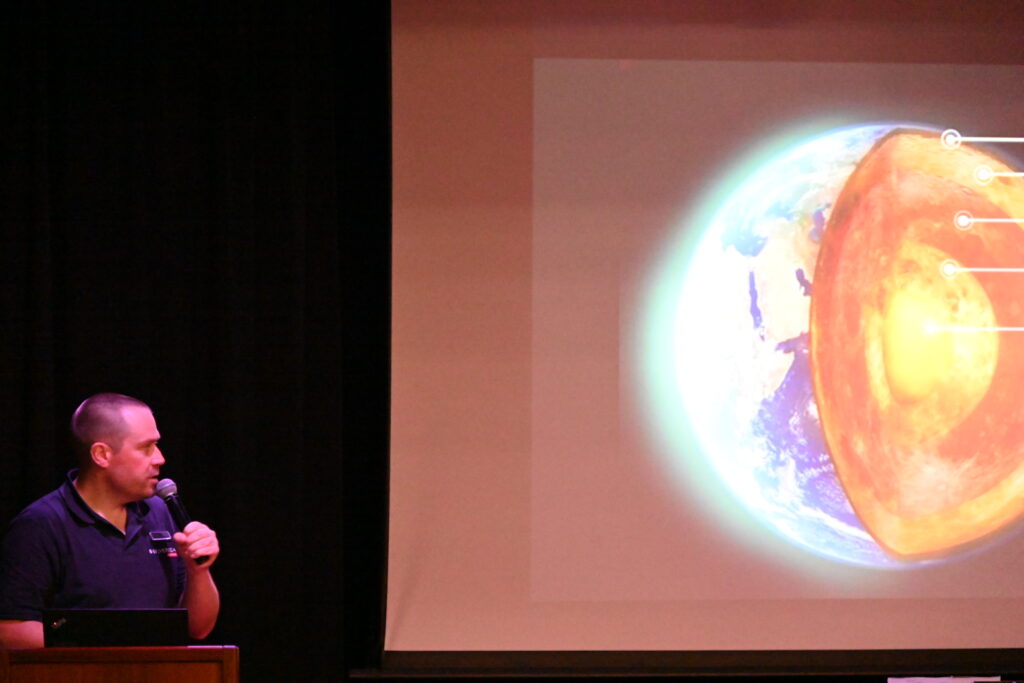
While Jonathan describes the 1961 evacuation of Tristan da Cunha following the volcanic eruption:
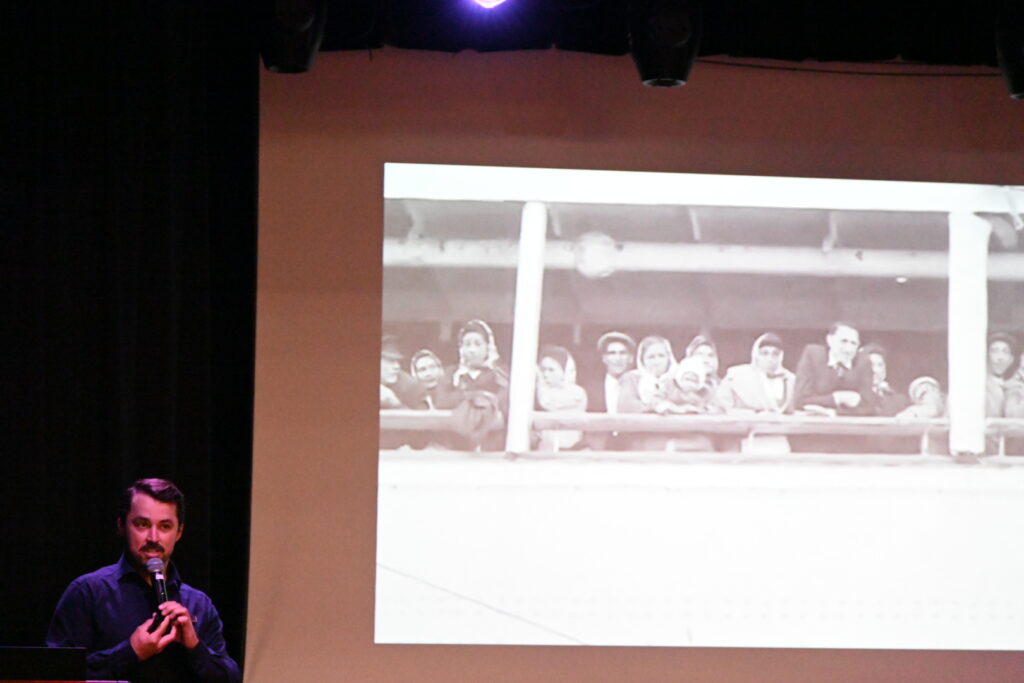
No dinner photos tonight, as we elected to order in pizza and watch some television instead. But I did manage a sunset photo!
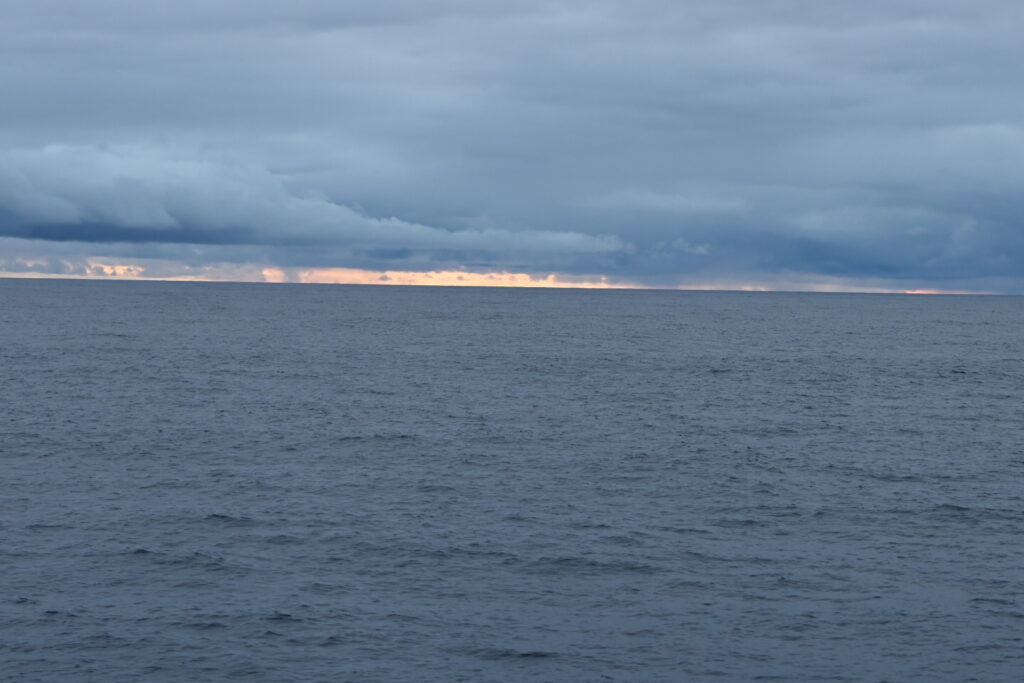
We’d entered the day hoping for some clarity on tomorrow’s landing, but that’s not how the day has gone – so we fall asleep with our fingers still firmly crossed.
